Resources
Let us be your go-to for all things HR, people management and payroll. Take a look at our helpful blogs, webinars, research reports, guides and more.
Featured resources
-
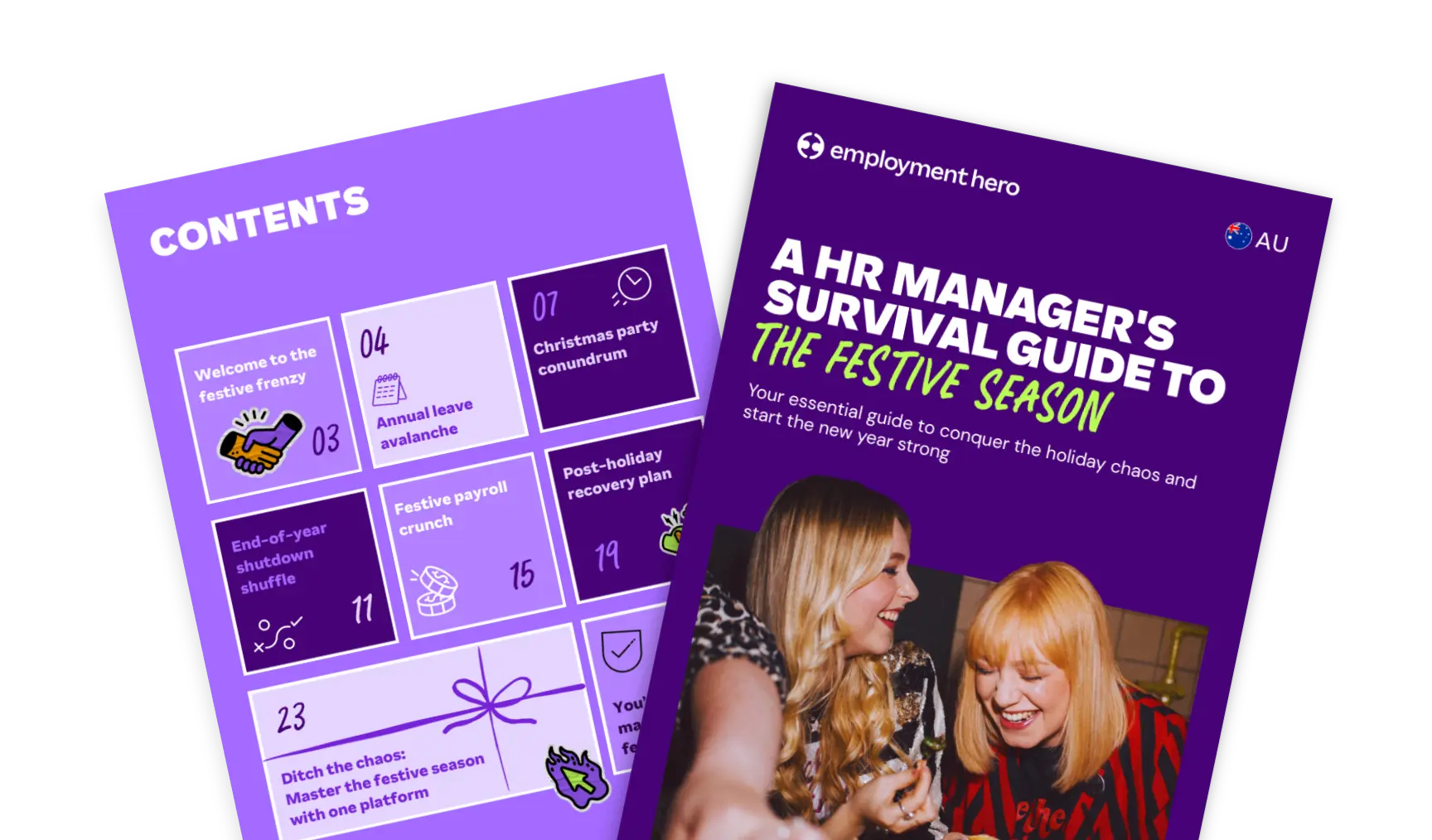
HR Managers: Don’t just survive the festive season, master it
Read more: HR Managers: Don’t just survive the festive season, master itMake year-end easier: manage leave, payroll, parties and shutdowns with confidence. Get practical tips for Australian SMEs. Download the free guide today
-
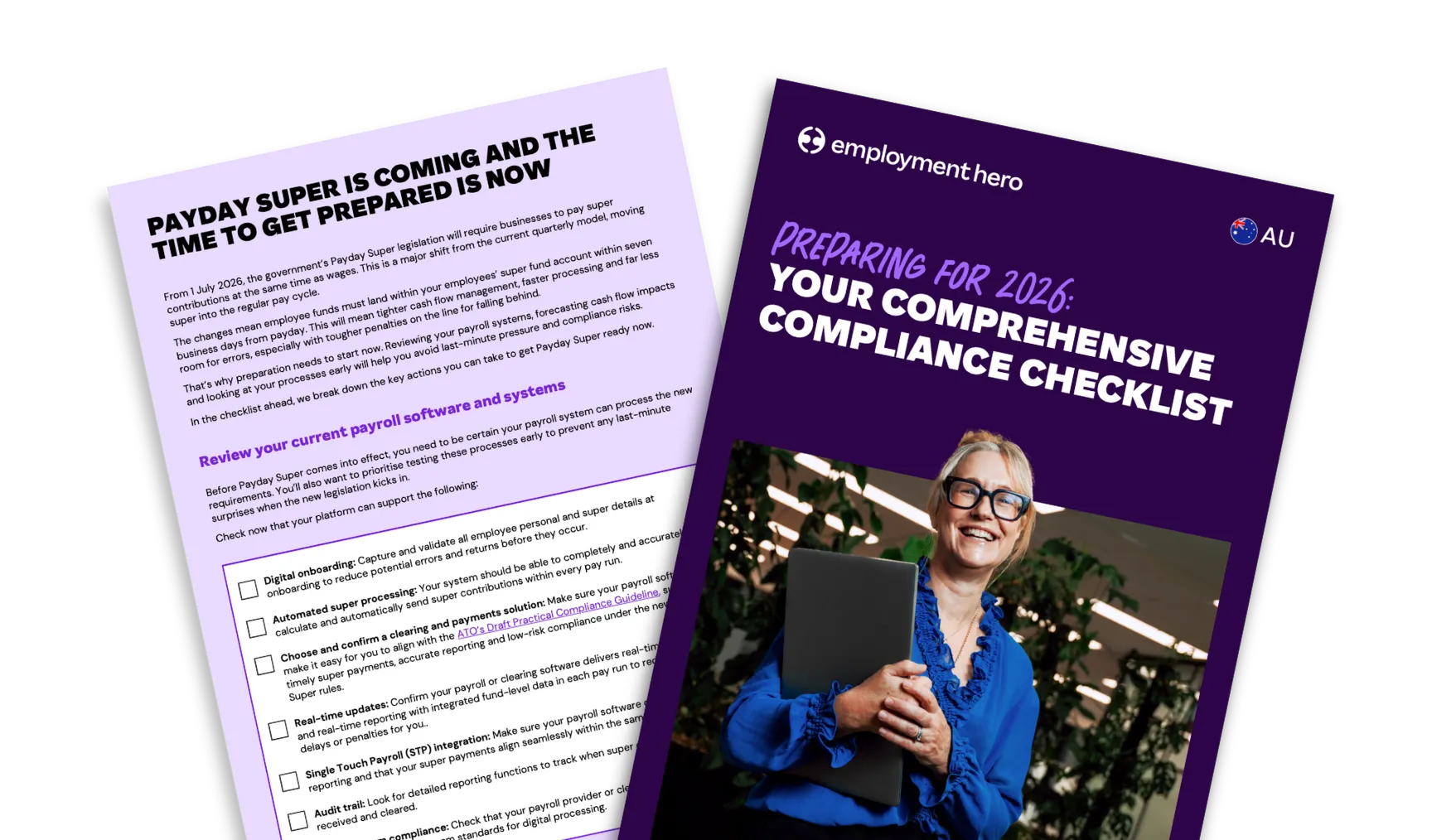
Preparing for 2026: Your Compliance Checklist
Read more: Preparing for 2026: Your Compliance ChecklistGet your business ready for the 1 July 2026 changes. See practical steps for Payday Super, cash flow planning and policy compliance updates here.
-

Monthly business budget template for employers
Read more: Monthly business budget template for employersPlan your monthly income and expenses with our free monthly business budget template. Download today to track cash flow and forecast.

Talent Insights
Report
‘The Great Resignation’, ‘Quiet Quitting’, ‘Career Cushioning’… What’s going on with Australian employees and the jobs market in 2023? We surveyed 1,000 to find out.
Trending topics
The future is flexible
-
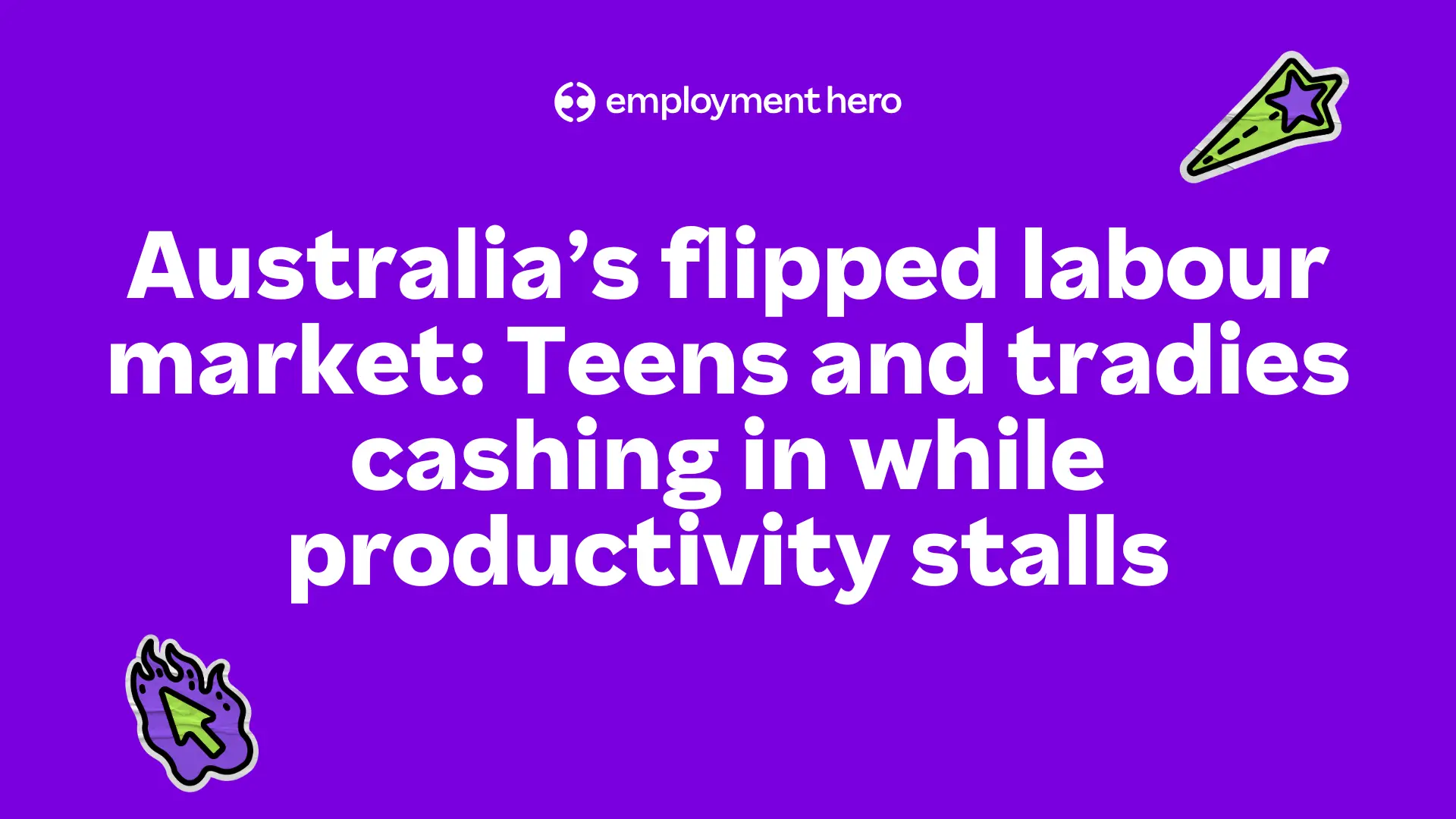 Read more: Australia’s flipped labour market: Teens and tradies cashing in while productivity stalls
Read more: Australia’s flipped labour market: Teens and tradies cashing in while productivity stallsAustralia’s flipped labour market: Teens and tradies cashing in while productivity stalls
Australia’s flipped labour market sees teens and tradies cash in. Wages are surging for youth and construction, but falling hours…
-
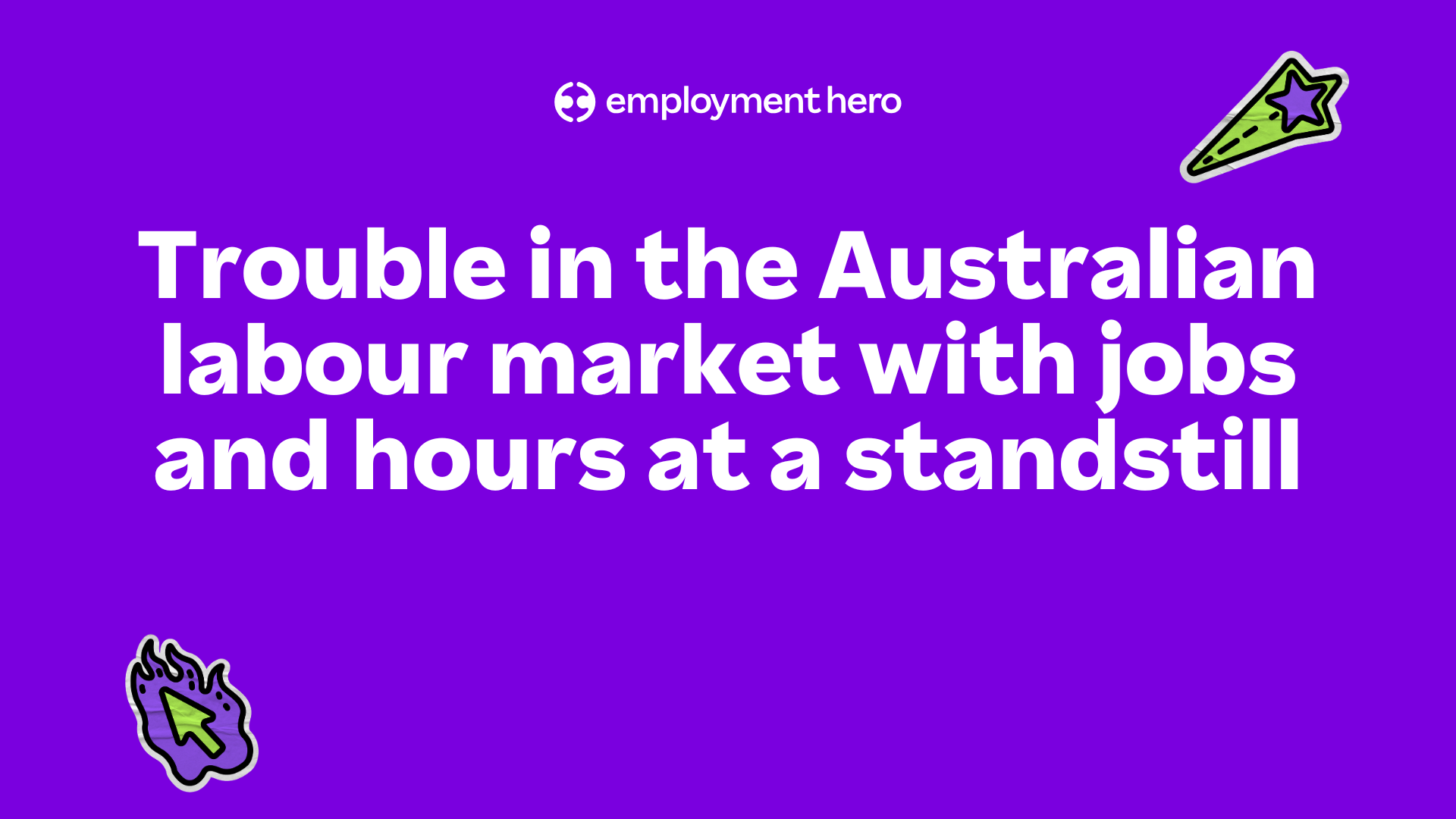 Read more: Trouble in the Australian labour market with jobs and hours at a standstill
Read more: Trouble in the Australian labour market with jobs and hours at a standstillTrouble in the Australian labour market with jobs and hours at a standstill
Employment Hero June Jobs Report reveals abysmal growth. Jobs and hours remain flat month-on-month, signaling a stalled recovery despite recent…
-
 Read more: Australia’s jobs market slows – but Gen Z and casuals in the fast lane
Read more: Australia’s jobs market slows – but Gen Z and casuals in the fast laneAustralia’s jobs market slows – but Gen Z and casuals in the fast lane
Australia’s job market slows but Gen Z surges. Casual jobs jumped 10.1% and teen hiring rose 27% as employers shift…
Trending guides and templates
-
 Read more: HR Managers: Don’t just survive the festive season, master it
Read more: HR Managers: Don’t just survive the festive season, master itHR Managers: Don’t just survive the festive season, master it
Make year-end easier: manage leave, payroll, parties and shutdowns with confidence. Get practical tips for Australian SMEs. Download the free…
-
 Read more: Monthly business budget template for employers
Read more: Monthly business budget template for employersMonthly business budget template for employers
Plan your monthly income and expenses with our free monthly business budget template. Download today to track cash flow and…
-
 Read more: Holiday leave guide for Australian employers
Read more: Holiday leave guide for Australian employersHoliday leave guide for Australian employers
Learn how to manage annual leave and Christmas leave requests in Australia. Understand entitlements, calculations and employer rights with our…
-
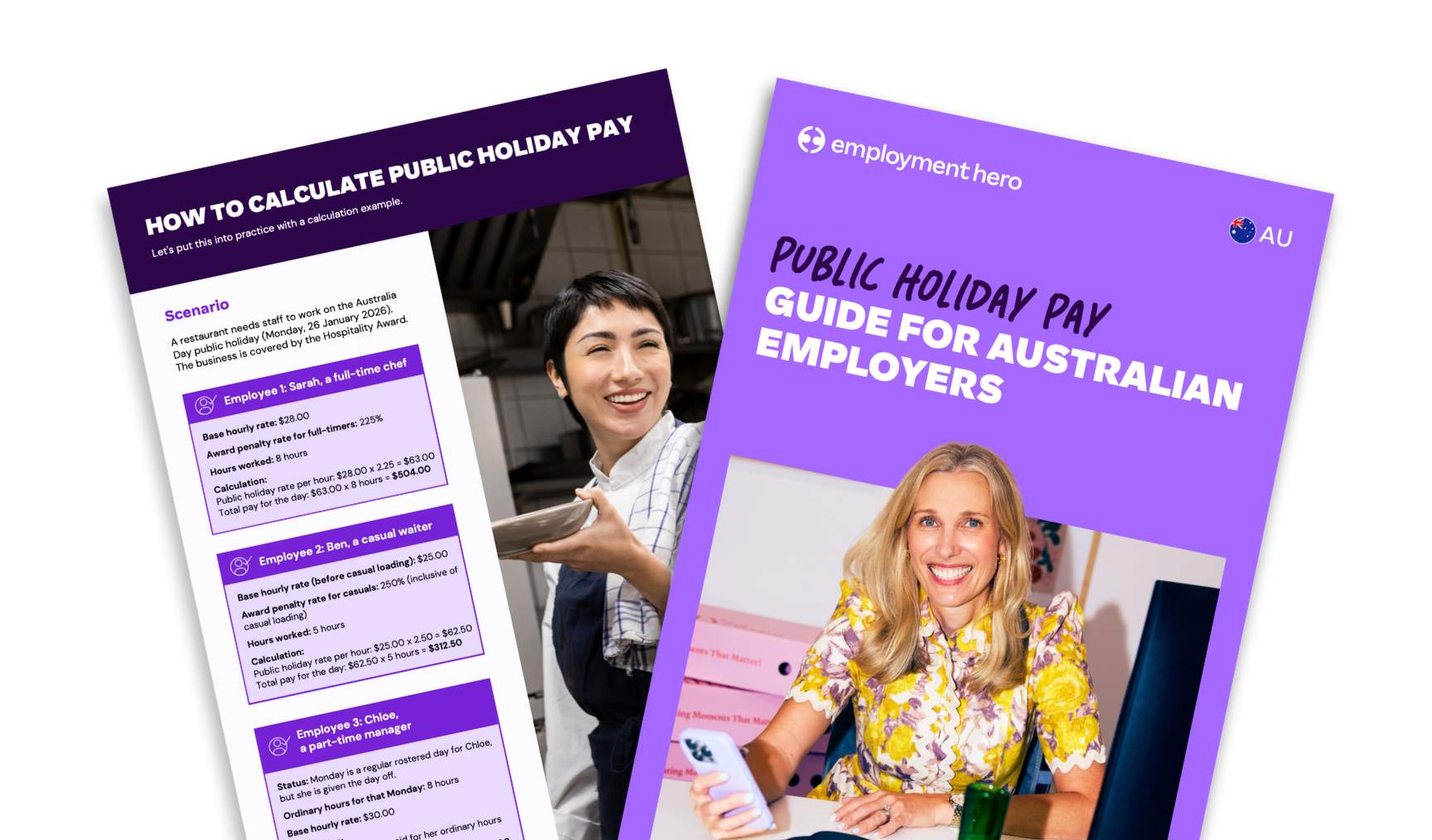 Read more: Public holiday pay guide for Australian employers in 2026
Read more: Public holiday pay guide for Australian employers in 2026Public holiday pay guide for Australian employers in 2026
Understand public holiday pay in Australia. Learn how to calculate rates, entitlements and award conditions with our free guide.

On-demand webinars
Trending in Australia
Exclusive insights, content and events to help grow your business. For SMEs on the up.
-
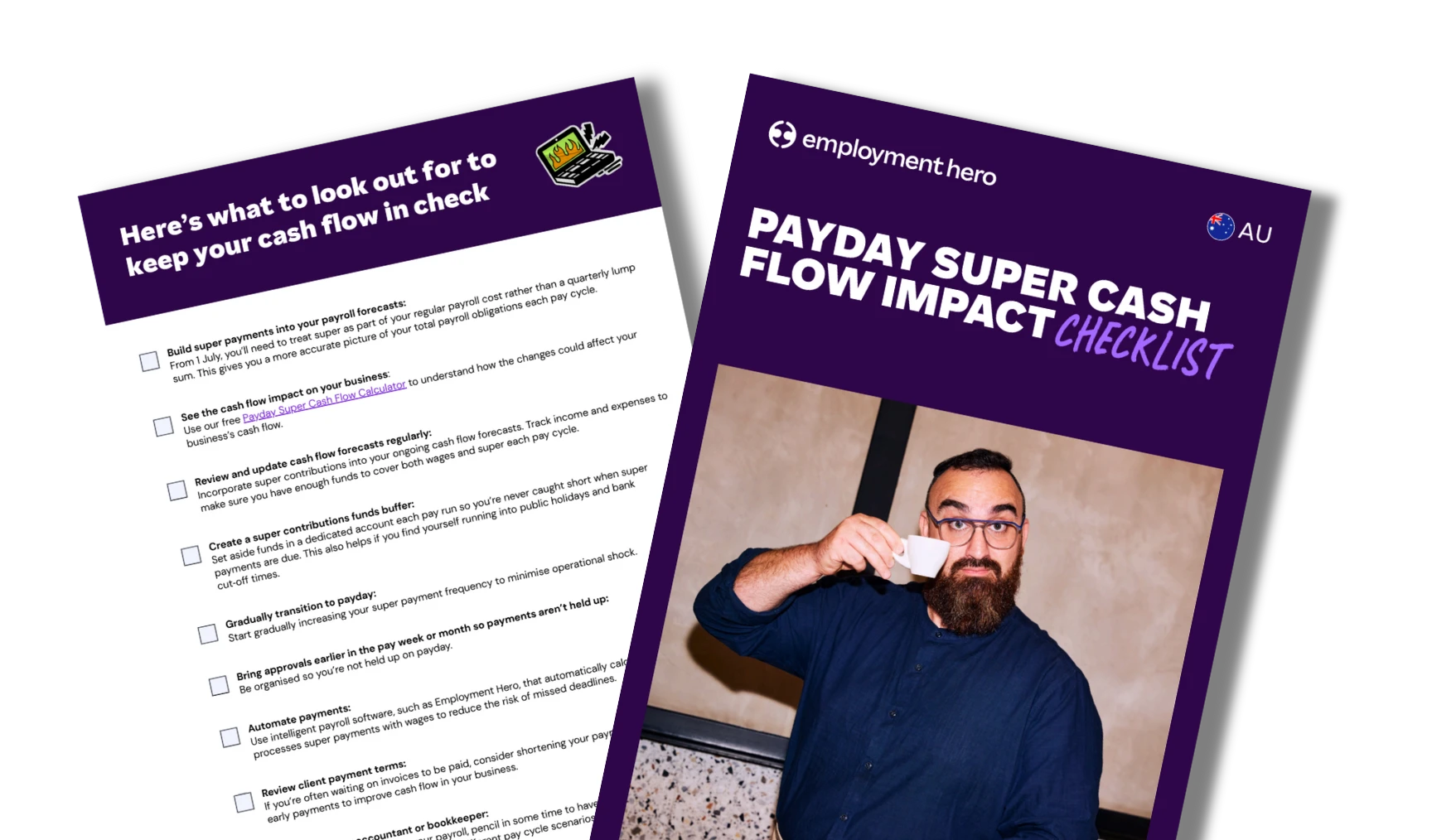
Payday Super cash flow impact checklist
Read more: Payday Super cash flow impact checklistBusinesses will need to strengthen cash flow management and streamline internal processes to meet the new deadlines set by upcoming payday super changes.
-

HR compliance checklist for small business in Australia
Read more: HR compliance checklist for small business in AustraliaDownload our free HR compliance checklist for small businesses. Stay on top of Fair Work, payroll, WHS and record-keeping obligations with ease.
-
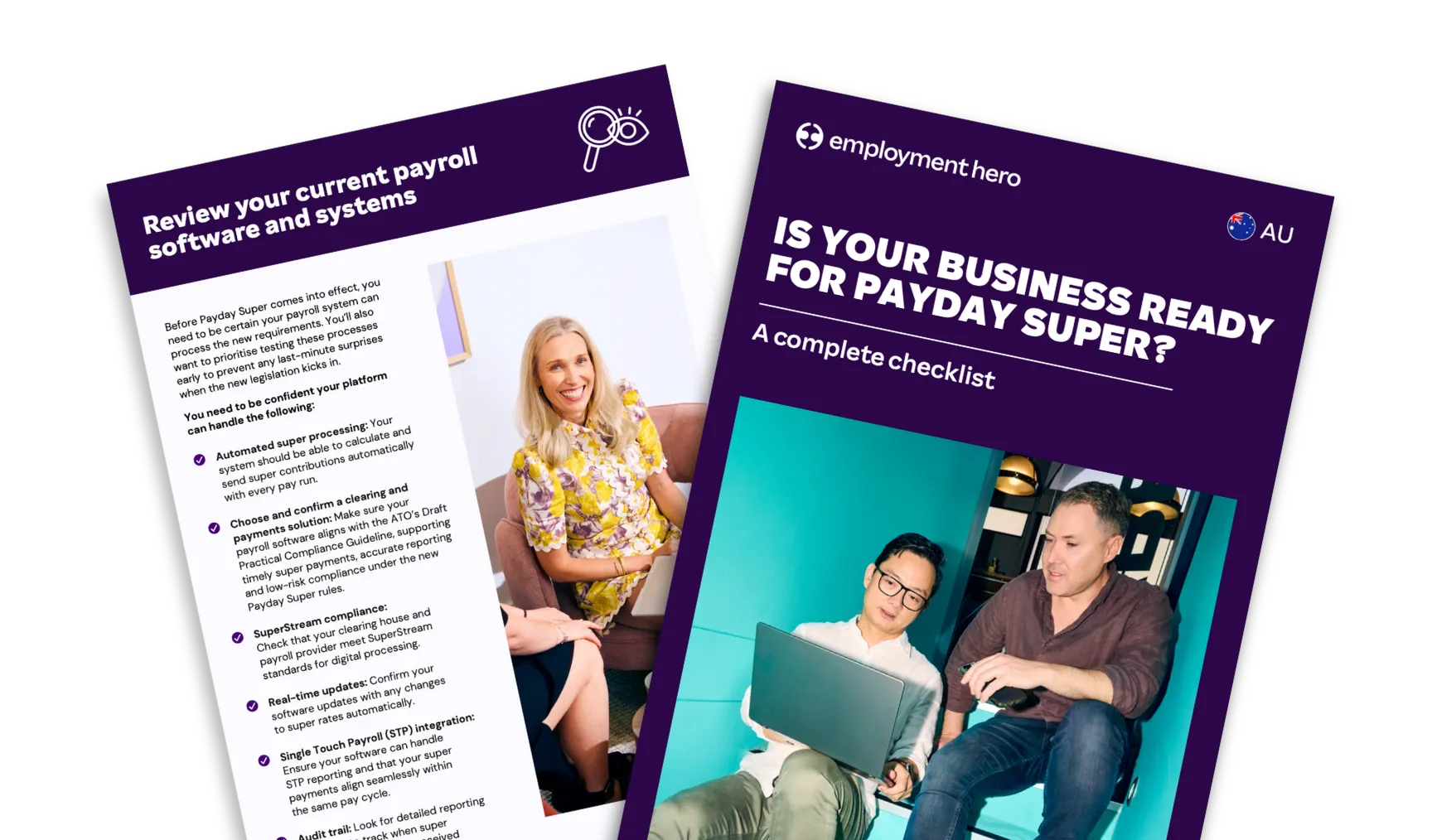
Payday Super Checklist
Read more: Payday Super ChecklistIs your business ready for Payday Super? Use our complete checklist to do an audit of your current systems and processes.
Big ideas. At your fingertips.

Blogs and articles
Bite-sized content helping you to stay across the latest trends and news about all things HR, payroll and people management.

Templates
Customisable templates library for all of your business needs.

Guides and playbooks
Let us be your guide for all things business, HR, payroll and people management.

Factsheets
Complex ideas – summarised and simplified. Browse our factsheet library covering the latest HR and payroll updates to keep your business compliant.

Watch and learn
Explore the vast library of our upcoming and on-demand webinars to learn from the leading industry experts about topics that matter to your business.

Case studies
Learn more about how we’ve made employment easier and more rewarding for businesses across multiple industries.
Browse the latest resources
Looking for more?

Online events. That keep you interested.
Sign up for an HR masterclass, learn about latest industry news or watch a panel session on demand.

Covid-19
Resource Hub
We’ve pulled together essential resources to help employers, managers and HR specialists navigate the ongoing pandemic.
Make work easier.
Get started today
Every big idea starts with a small step forward.



































